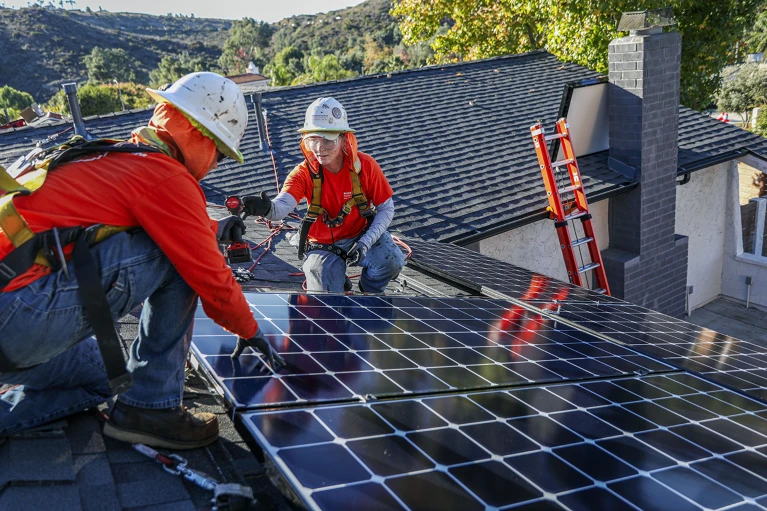
The success of the $1 trillion that was recently invested by the U.S. federal government to mitigate climate climate change through the Inflation Reduction Act (IRA) and the Bipartisan Infrastructure Law (BIL) largely depends on how well state and local governments spend the money, according to new a commentary recently published in Nature.
The piece argues that the local jurisdictions, which bear much of the responsibility for implementing the legislation, must adopt an attitude of experimentation and evaluation.
“This is a once-in-a-generation opportunity to reshape our energy landscape,” said Gordon McCord, an associate teaching professor at the UC San Diego School of Global Policy and Strategy and coauthor of the paper. “By committing to learning what works through experimentation and evaluation, state and local governments can lead the way in achieving the U.S.’s climate goals under the Paris Agreement.”

The historic investments are geared toward accelerating the nation’s transition to a low-carbon economy through designing policies that incentivize consumers and businesses to produce and use more renewable energy, drive more electric vehicles and adopt other sustainability measures.
“For example, states can establish programs to oversee rebates for energy efficiency and electrification of housing and appliances from the $4.3-billion Home Owner Managing Energy Savings (HOMES) Program and the $4.5-billion High-Efficiency Electric Home Rebate Program,” the authors write. “In addition, building codes and land-use policies fall under the jurisdiction of thousands of local governments across the country.”
However, these policies must be seen as experiments by integrating evaluation from the start.

“There is a lot of learning that needs to be done in terms of understanding what works and what doesn’t to change people’s behavior in ways necessary for decarbonization,” said Teevrat Garg, an associate professor of economics at the School of Global Policy and Strategy and coauthor of the paper. “Decarbonization is a complex and ongoing process that partially hinges on our ability to design policies and incentives that enable broad-based and cost-effective participation from all sectors of society.”
The piece emphasizes the importance of collaboration with researchers to evaluate program outcomes, rigorous independent analysis and harmonizing data collection across jurisdictions.

The authors of the paper are part of the JPAL North America working group on the economics of decarbonization, which recently began offering training to state and local government agencies on the design and implementation of field experiments to evaluate the cost-effectiveness of different climate policies.
One of the initial local jurisdictions selected is San Diego County, where the scholars are working with the county’s Office of Evaluation, Performance and Analytics (OEPA) to design impact evaluations.
“We are very excited to support OEPA in measuring cost effectiveness of climate actions and to help San Diego County show other jurisdictions by example how impact evaluations are key to continuously improving climate policies in the coming decades,” McCord said.

